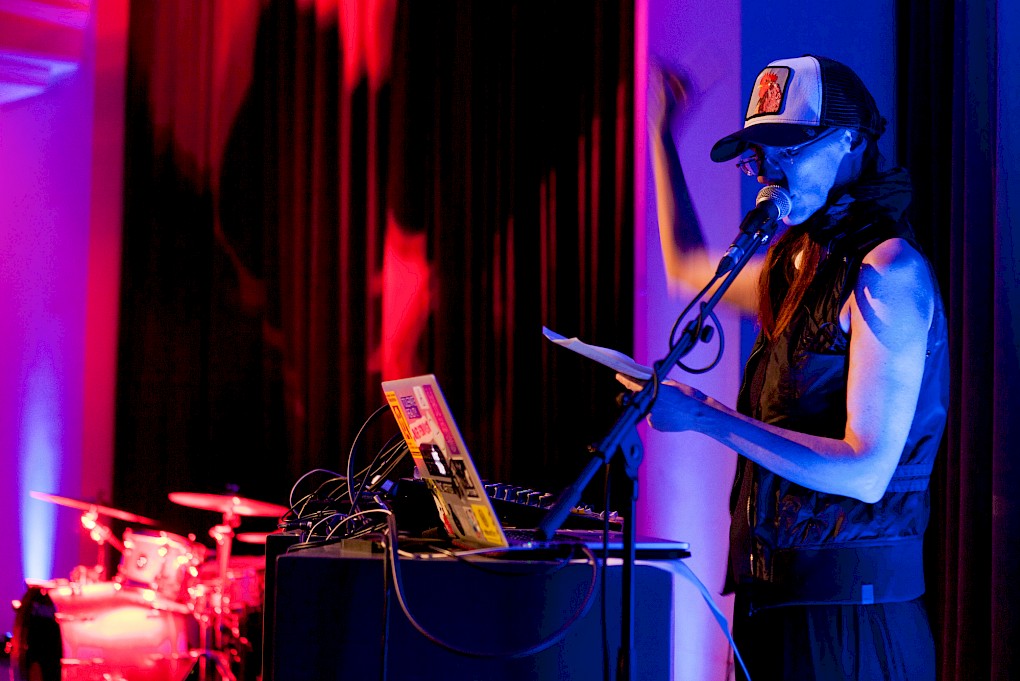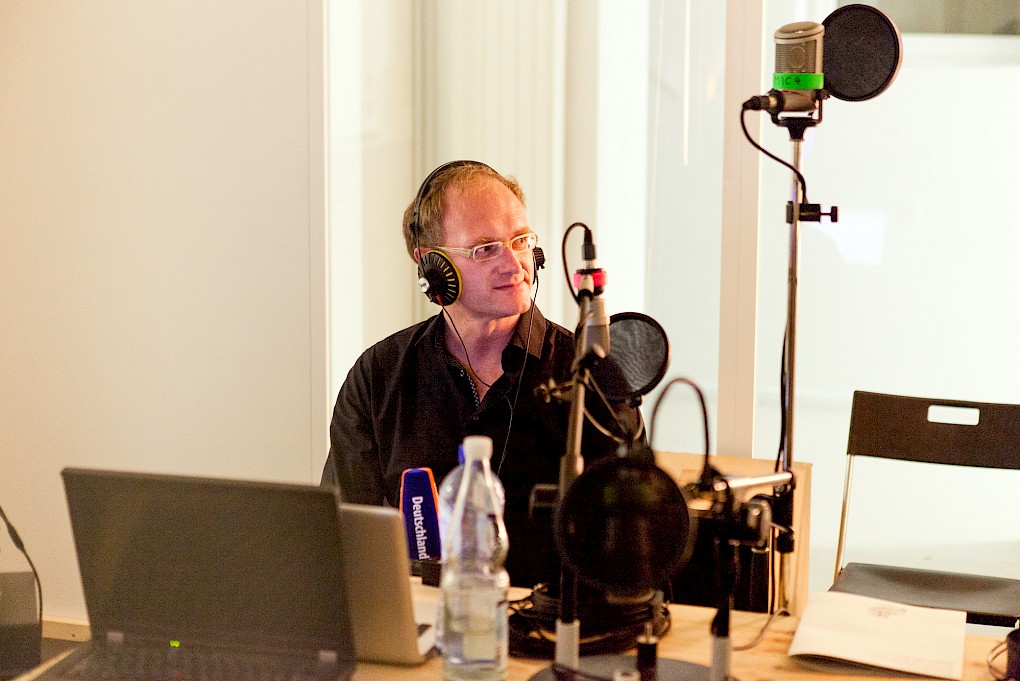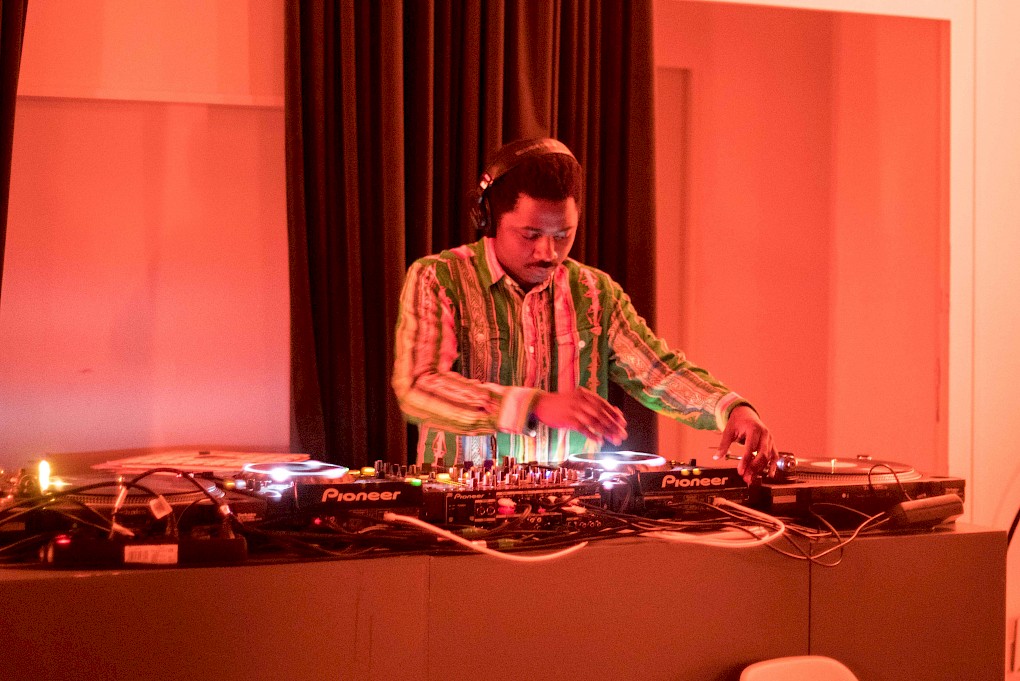EVERY TIME A EAR DI SOUN:
SAVVY Funk
As iteration of Every Time A Ear di Soun – a documenta 14 Radio Program, SAVVY Contemporary, Deutschlandradio Kultur and documenta 14 are presenting SAVVY Funk: a radiophonic project, an open archive in the form of a reading and listening room, and a series of footnotes by the invited artists.
Documenta 14 Radio Programme
Savvy Funk 17.06.–08.07.2017 24 hours
Open 17.06.–08.07.2017 daily 09:30–00:00
Frequencies 103.0 FM in Berlin 90.4 FM in Kassel SW 15560 kHz
and all over the world on documenta14.de
WITH Leo Asemota, Gívan Belá, Alessandro Bosetti, Alberto de Campo, Tim Etchells, Igor Eskinja, Abrie Fourie (Colonial Neighbours), Dani Gal & Achim Lengerer, Antye Greie-Ripatti, Satch Hoyt, Island Songs (Silvia Ploner & Nicolas Perret), Felix Kubin, Brandon LaBelle & Anna Bromley, Missy Magazine (Gina D’Orio & Margarita Tsomou), Mobile Radio, Nastio Mosquito, Ahmet Öğüt, reboot.fm (Diana McCarty & Pit Schultz), Natascha Sadr Haghighian & Nicholas Bussmann, Saout Radio (Anna Raimondo & Younes Baba-Ali), Tito Valery, Rui Vilela, Sara Washington & Knut Aufermann, James Webb
Within the framework of Every Time A Ear Di Soun – a documenta 14 Radio Programme, and for the duration of twenty-two days the spaces of SAVVY Contemporary will be transformed into a radio-station, an open studio and a platform where audio material and sonic content will be produced live and broadcast (on FM, on short waves and online) and where the public is invited to engage in a collective practice of critical listening. A 24/7 radio-program as a work of art, SAVVY Funk is conceived as a space for aural experimentation, for new forms of participation, performativity, epistemological diversity, intellectual contagion and hangabout. Hosting a wide range of practices and languages, SAVVY Funk explores sonority and auditory phenomena as a medium to write counter-hegemonic histories, deliberates on how sound creates and accommodates psychic and physical spaces.






Drawing upon the power of sound and radio to shape forms of knowledge and action, inspired by Franz Fanon’s idea of the radio as a means of political struggle and resistance (Franz Fanon, A Dying Colonialism, 1959) and by Arnheim’s call to empathically bring poets “into the wireless studio” (Rudolf Arnheim, Radio: an art of sound, 1936), SAVVY Funk has invited eighteen artists to shape the radio programme. The artists invited have developed collaborations with students from the Class for Experimental Radio at Bauhaus-Universität Weimar, led by Prof. Nathalie Singer and Martin Hirsch.
Furthermore, Bauhaus-Universität Weimar is also contributing an open archive with more than 200 items: from Singer’s private collection–comprising landmark books, records and historical exhibits since the early days of broadcasting and radio-drama–to the digital archive of radio art EXPA, where visitors can browse through and listen to 7.000 radio works spanning more than a century of radio art history. This archive dedicated to sound and art – accommodated within the structures of Mutant Matters by Lorenzo Sandoval and S.T.I.F.F – is in dialogue with SAVVY.doc, the open library of SAVVY Contemporary challenging archive’s traditional categorisations and power mechanisms beyond Western epistemology, and with Colonial Neighbours, SAVVY Contemporary’s permanent radical and participative archive on German colonial history.
Alongside the radio-program and the reading and listening room, it is a series of footnotes in the form of artworks, documents, video and audio-pieces which reflects on auditory agency and the poetic and political dimension of sound. Besides the contributions by SAVVY Funk artists, Rui Vilela is presenting research material focusing on the history of Guinea-Bissauan Rádio Libertação founded during the Portuguese colonial occupation in 1967 and playing a crucial role in the transmission of the ideas of the African Party for the Independence of Guinea and Cabo Verde (PAIGC) founded by Amílcar Cabral.
Spread across the spaces of SAVVY Contemporary, the footnotes are connected to the main body of the radio through a spatial intervention by artist Igor Eskinja. Visitors to SAVVY Funk are invited to delve into the multilayered research material, and to experience a radio in the making, while becoming actors in an “imaginative partnership between practitioners and audience” (Seán Street, The Poetry of Radio: The Colour of Sound, 2012).






SAVVY Funk Team
Programmers Bonaventure Soh Bejeng Ndikung, Marcus Gammel, Elena Agudio
Coordinators Tina Klatte, Maximilian Netter
Curatorial assistant Sol Izquierdo de la Viña
Management Lema Sikod
Management assistant Lynhan Balatbat-Helbock
Class of Experimental Radio
at Bauhaus-Universität Weimar,
Faculty of Art and Design
Led by Prof. Nathalie Singer, Martin Hirsch
Broadcast Konrad Behr, Jennifer Fuchs, Jan Glöckner, Grit Lieder, Johann Mittmann, Janine Müller, Benjamin Serdani, Corinna Thamm, Josephine Tiede, Severin Schenkel, Andreas von Stosch, Markus Westphal
Archival research and display/design
Anna Rupp,Rosa Süß, Rafael Brasil Sabino, Alejandro Weyler
Sourced from the EXPA Archive and the collection of Nathalie Singer
Thanks Johannes Kühn and Carolin Würthner at Kuehn-Malvezzi Architects, Holzwerkstatt Bauhaus-Universität Weimar, gefördert durch den Kreativfonds der Bauhaus-Universität Weimar
key visual Laurenz Brunner, Moriz Oberberger
The archive section of SAVVY Funk at SAVVY Contemporary is accommodated within MUTANT MATTERS by Lorenzo Sandoval and S.T.I.F.F., and co-produced with ar/ge kunst, Kunstverein Bolzano. MUTANT MATTERS is one-of-a-kind device, commissioned by SAVVY Contemporary in 2013, and later by ar/ge kunst in Bolzano, manifesting as a crossing point between an archival system and social space


